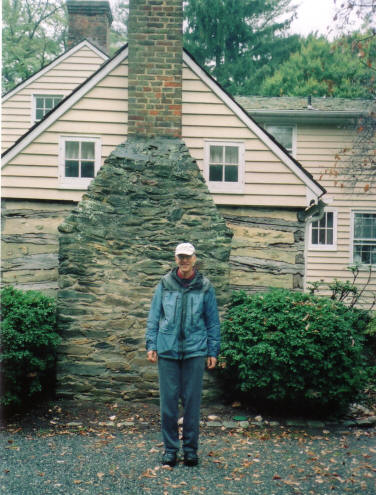|
|
Follow the Drinking Gourd:
|
About This Site
Why a Drinking Gourd Website?I first read Jeanette Winter's Follow the Drinking Gourd picture book in the summer of 2004. My family (which then included two elementary school students) next heard the audiobook version. I shared the book with my parents-in-law, both of them serious map collectors and strong supporters of the University of Southern Maine. Educational outreach is one of the chief missions of their Osher Map Library. They in turn passed the book along to the Library staff, who are always seeking ways to make geographic learning appealing to elementary school students. As the Library considered programming built around the song, I began to feel responsible. I decided to learn more and, as an amateur discographer, figured it would also take me about two weeks to prepare a discography. I was sure that there would be 78s by the Fisk Jubilee Singers or other early recording artists, along with printed versions in old songbooks such as Slave Songs of the United States. I was stunned that the earliest recording was by the Weavers in 1951 and that the earliest print account dated to 1928. My curiosity piqued, I launched into an effort, still underway, to try to understand the song and its cultural history. I examined Lee Hays' papers at the Smithsonian Center for Folklife and Cultural Heritage, did some additional primary research at the Boston Public Library, imposed mightily on the capable reference staff at the local Cary Memorial Library (Lexington, MA), and generally contacted everyone I thought might know something about the song. This site is the result. About the AuthorJoel Bresler is an accomplished executive and entrepreneur with exceptional experience leading corporations and new ventures in business development and general management. Key past accomplishments include business development for best-selling electronic media and software products. Joel co-founded two firms sold to public companies, including one to Microsoft. He is currently the Director of Commercialization at Northeastern University, where he manages commercialization and business development activities for the Center for Research Innovation, licensing the University’s inventions to existing businesses and spin-out companies. His portfolio includes nanotechnology, medical devices, cleantech, robotics, catalysts, Homeland Security, advanced materials and the life sciences. His other musical research site may be
found at
www.sephardicmusic.org and his personal site is
www.joelbresler.org. MediaNew York Times, February 2, 2007Research from this site was used in an Op-ed piece entitled History's Tangled Threads by Fergus M. Bordewich on February 2, 2007. Please see here for the full article. An excerpt:
Tuscaloosa News, February 11, 2007Editorial Director Ben Windham mentioned this site in a detailed column February 11, 2007 in the Tuscaloosa News, Looking for the truth about the Confederate era. An excerpt:
Please see here for the full article. My earlier correspondence with Windham is detailed here. Dome-L, February 21, 2007In light of the research presented here, the Planetarium community re-evaluated its popular show, Follow the Drinking Gourd. A letter from the coordinator of the Andrus Planetarium at the Hudson River Museum to the Dome-L mailing list (for planetarium professionals) kicked off the discussion with an anecdote about "a revolt of audience members":
SearchEngineWatch.com, March 13, 2007Eric Enge posted an analysis of how this site is presented by the three major search engines, Google, Yahoo and MSN. Essentially, Yahoo and MSN are quicker to showcase new material, while Google lags behind. You can see more discussion on what this site demonstrates about search engines here. Underground Railroad Free Press, May, 2007It seems only fair to print the pans along with the praise. Editor Peter H. Michael dissed and dismissed this site, writing:
I replied, in a Letter to the Editor that went unpublished:
Rucker's contention about the absurdity of researching the Underground Railroad comes up repeatedly in the field. In his February 2, 2007 New York Times Op-Ed piece cited above, Fergus Bordewich directly challenges the
SearchEngineWatch.com, May 30, 2007Eric Enge updated his analysis of this site in his By the Numbers column, here. Eric focused on Google's performance ranking this site, some interesting Google search bugs I unearthed, and how long it took MSN to drop stale pages at other sites. SEOmoz.org, June 15, 2007I uploaded a detailed blog entry on Google search bugs uncovered while researching and publishing this site. Read the posting and responses here. 2007 Yearbook for Traditional MusicThis website was reviewed by Cheryl. A. Tobler. The reviewer particularly liked the Appendices and how they might be used for teaching purposes:
She also rightly noted that I still need to add a bibliography and better citations. (In the meantime, please contact me if you need any such information not yet published on the site.) The review closed by saying the website showed the
|
Author's AcknowledgementsI thank Northern Kentucky University's Institute for Freedom Studies, Ohio University's Department of African American Studies, Professor Kate Larson of the History Department at Simmons College and The Underground Railroad History Project for the opportunity to present earlier versions of this work. I thank Professor Larson, Leigh Fellner, Dr. Nkeiru Okoye and Professor Eliot Singer for reviewing and commenting. Any errors are mine. DedicationThis site is dedicated to my children Abigail and Matthew who introduced me to Follow the Drinking Gourd and to my wife, Dr. Judith A. Osher, for her unwavering support. |
 |
|
The author in front of the Riley House in Bethesda, Maryland where Josiah Henson (the model for Uncle Tom) was enslaved. |
|
|
Copyright
2008 - 2012, Joel Bresler.
|